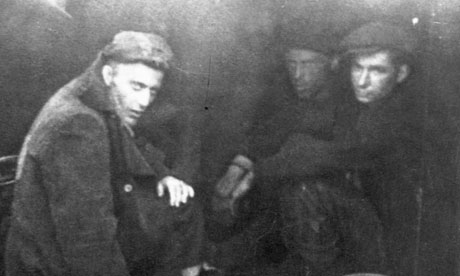
The idea of writing this book came to me while doing research for an educational pack on Holocaust art and I came across a series of prints by Leo Haas. I was intrigued by their haunting and unusual subject matter: a Nazi guard barring an empty street; fearful children being herded along a road by an armed soldier; gaunt people crowded together on the floor of a filthy attic; dozens of wide-eyed people with suitcases reluctantly stepping towards an unknown future.
I discovered that Haas had been a Jewish artist imprisoned by the Nazis in the Czech fortress of Terezín, along with many other accomplished artists. Drawing in secret, with the ever-present fear of being discovered, Haas and the other artists vividly depicted the harsh daily life of Terezín's inmates – sleeping in overcrowded dormitories, queuing for food, frequent deaths and regular deportations to Auschwitz.
I found that not only was there a wealth of potent illustrations of Terezín life, but also all sorts of other material resources, including official documents, bank notes, ration books, vaccination certificates and thousands of children's drawings. I realised that these would form a compelling visual basis for an accessible book for young people about the Holocaust, based almost wholly on primary evidence. Next I needed to find out about people's experiences of the camp.
So began a period of research trawling libraries and archives in London, Prague and Terezín. I found a wealth of diaries, published memoirs and historical accounts from which to draw extracts. I also spent many rather harrowing hours listening to recorded interviews with survivors of Terezín at the Imperial War Museum.
In Terezín itself, I saw for myself the buildings, roads and fortifications shown in the artists' works. It was a moving and humbling experience to be in the place where so many thousands of Jewish inmates had suffered.
It was essential to marry pictures and words to tell a complete story – the book interweaves drawings, paintings, documents and ephemera with many first-hand accounts of life in Terezín; I wove the narrative in and around the pictures. I also decided to include some contemporary photographs of the town as it is today. I wanted to show that the places depicted in the artworks are completely real and still standing, a tangible and chilling reminder of a terrible moment in history.
I didn't want to tell the story myself. Those who lived through the horrendous experience of being at Terezín described what happened far better than I ever could. My role was to orchestrate their stories into a coherent and telling narrative.

